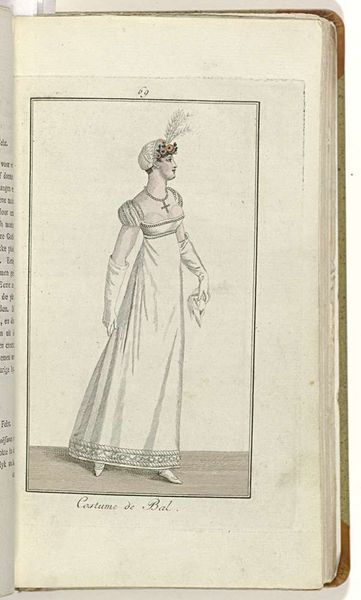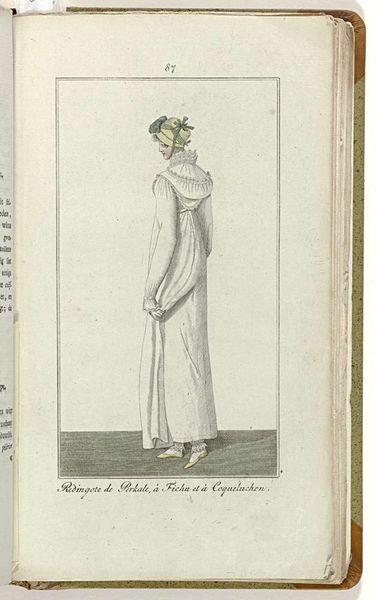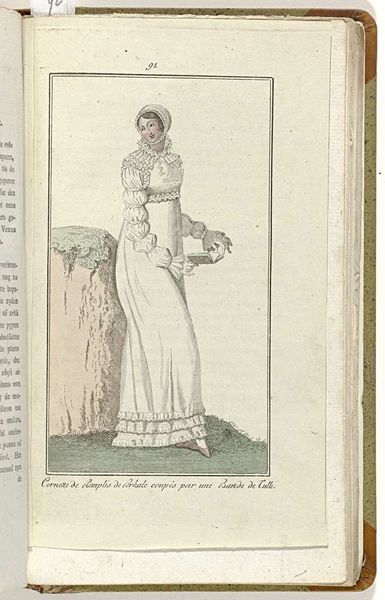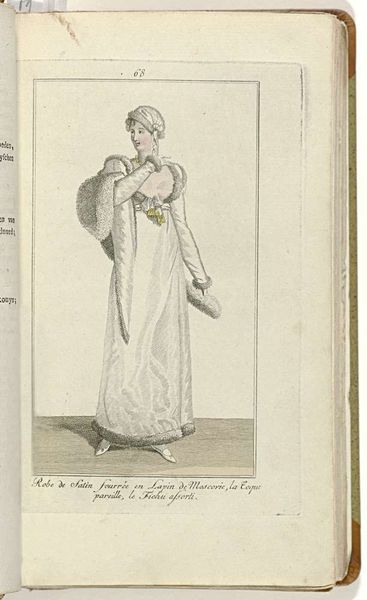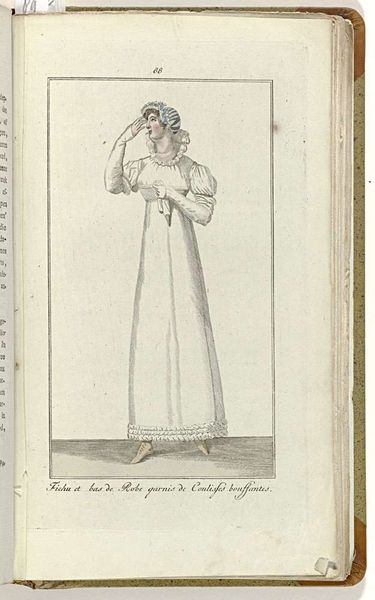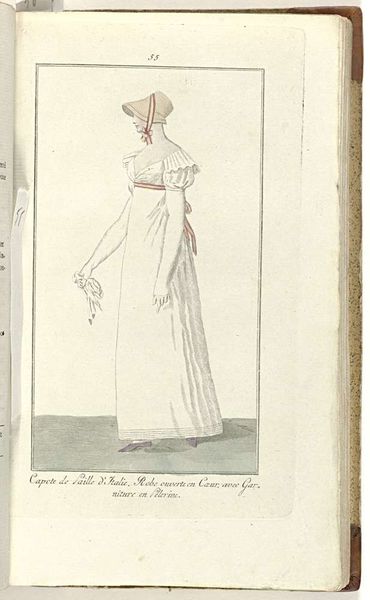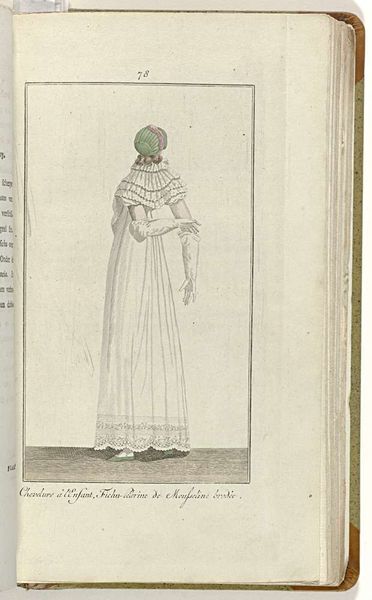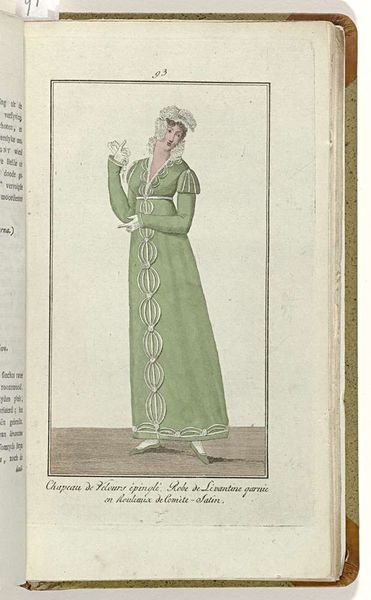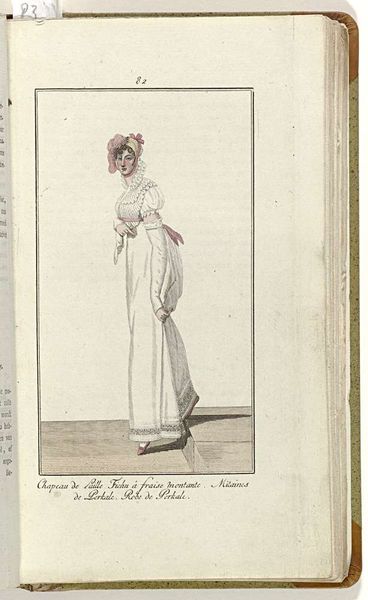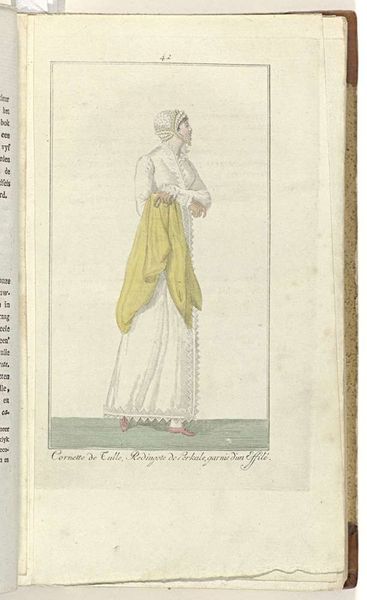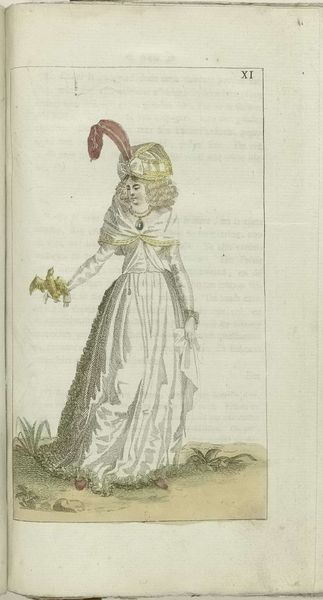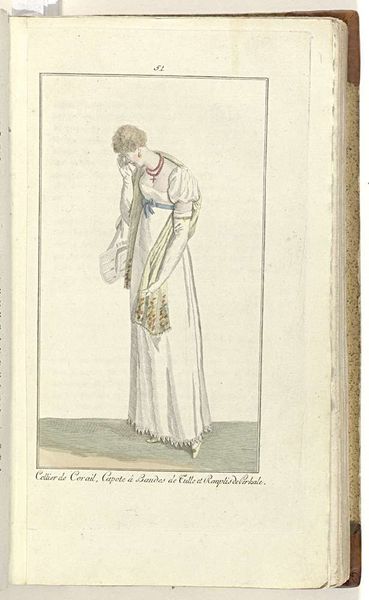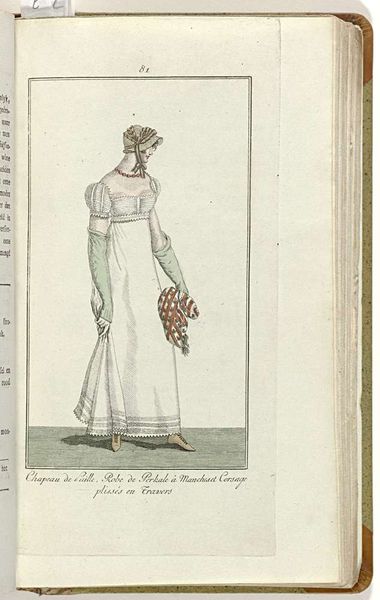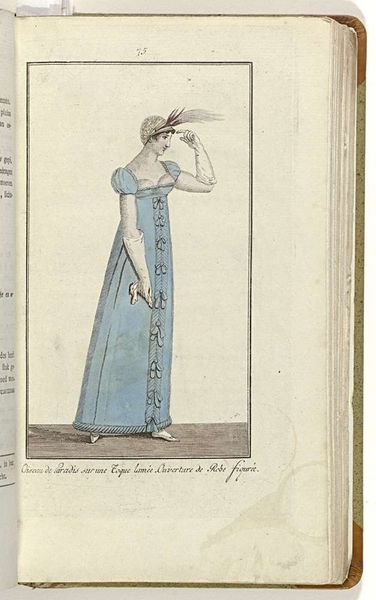
Elegantia, of tijdschrift van mode, luxe en smaak voor dames, Mei 1809, No. 76 : Costume de Lonchamp... 1809
0:00
0:00
engraving
#
portrait
#
old engraving style
#
figuration
#
romanticism
#
decorative-art
#
dress
#
engraving
Dimensions: height 220 mm, width 126 mm
Copyright: Rijks Museum: Open Domain
Curator: The delicacy of this piece really stands out. This is an engraving from 1809 titled "Elegantia, of tijdschrift van mode, luxe en smaak voor dames, Mei 1809, No. 76 : Costume de Lonchamp..." It’s an illustration from a fashion magazine, currently held in the Rijksmuseum. Editor: Immediately, I’m struck by how constrained and almost ghostly she appears. The whiteness of the dress against that pale background emphasizes a sense of enforced purity and the limitations placed on women of the time. Curator: The image provides a wealth of information regarding early 19th-century fashion. The high waistline, the delicate muslin, even the specific style of bonnet—these all tell a story about social status and cultural ideals through symbolic representation of this woman. The dress itself carries so much symbolic weight, representing luxury and refinement. Editor: Exactly! And isn’t that the core issue? Luxury and refinement built on social hierarchies and the suppression of women’s identities. We see her presented as an object of aesthetic appreciation, reinforcing the societal expectation for women to be visually pleasing above all else. Consider how the lack of colour further flattens her as an individual. Curator: But within the confines of those expectations, there’s a performative element at play too. The gesture of her hand, the tilt of her head – they speak to a conscious presentation of self within the accepted norms. Fashion has always provided opportunity, for signaling status, beliefs, sometimes rebellion. Editor: I concede there may be some room for negotiation. But it doesn’t absolve the structures of power inherent in such a limited visual vocabulary, she’s pointing in the way someone should look like at that time. Whose gaze is she responding to, perpetuating? It demands further scrutiny into how societal structures are embodied. Curator: A valid point, certainly, the power dynamics woven into the very fabric are there, hard to avoid for an art historian. This image acts as a potent marker, reminding us of how cultural values find expression, how images convey encoded messages. Editor: Absolutely, interrogating these artifacts allows us to understand not only historical trends but also to confront ongoing conversations surrounding power, identity, and representation, still crucial for us in today’s society.
Comments
No comments
Be the first to comment and join the conversation on the ultimate creative platform.
